Bringing a Chinese dwarf hamster into your home can be an exciting and rewarding experience. These small, energetic rodents make wonderful pets, but they need proper care to stay happy and healthy. Unlike larger hamster breeds, Chinese dwarf hamsters have unique needs when it comes to their habitat, diet, and daily activities.
Providing the right Chinese dwarf hamster care ensures that your pet thrives in its environment. From selecting the best cage and bedding to offering a well-balanced diet and fun exercise options, every aspect of their care plays a crucial role in their well-being. Understanding their behavior and health needs also helps prevent common issues and strengthens the bond between you and your pet.
This guide will cover the top 10 essential care tips to help you create the perfect living space, choose the right food, provide mental and physical stimulation, and maintain your hamster’s health. Whether you’re a first-time hamster owner or looking to improve your current setup, these tips will help you keep your pet hamster happy, active, and well cared for.
Setting Up the Perfect Habitat
Best Hamster Cages for Small Breeds
Choosing the right cage for your Chinese dwarf hamster plays a crucial role in its overall well-being. Since these tiny rodents are highly active and love to explore, you need to provide a spacious, well-ventilated enclosure that keeps them safe and comfortable.
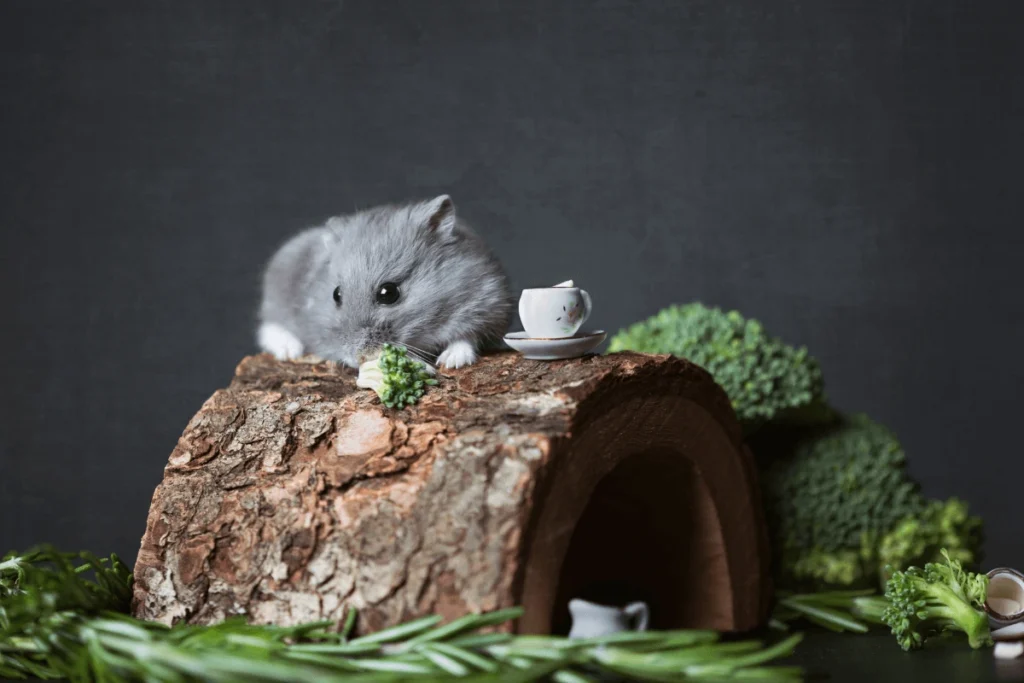
Look for cages that offer at least 450 square inches of continuous floor space. A larger cage allows your hamster to move freely, burrow, and engage in natural behaviors. Glass tanks (like a 20-gallon long aquarium) or large wire cages with a deep plastic base work well. Avoid cages with wire floors, as they can injure your hamster’s tiny feet.
Ensure the cage has a secure lid because Chinese dwarf hamsters are excellent climbers and can squeeze through small openings. Multi-level cages can provide extra space for enrichment, but they should have solid ramps and platforms to prevent falls.
Safe Bedding for Dwarf Hamsters
Providing the right bedding keeps your hamster warm, comfortable, and stress-free. Since Chinese dwarf hamsters love to burrow, they need at least 4–6 inches of soft, absorbent bedding to dig tunnels and create nests.
Choose paper-based bedding (like Carefresh or Kaytee Clean & Cozy) or aspen shavings since they are safe, dust-free, and highly absorbent. Avoid cedar or pine shavings because these contain aromatic oils that can cause respiratory issues.
Adding hay or shredded unscented toilet paper can make the nesting area softer and cozier. Regularly spot-clean soiled bedding and replace all bedding every one to two weeks to maintain cleanliness and reduce odors.
Habitat Setup
Creating a well-designed habitat helps your hamster feel secure and engaged. Start with the essentials: a hiding spot, water bottle, food dish, and plenty of enrichment toys. A ceramic hideout or wooden house gives your hamster a cozy space to sleep and feel safe.
Include chew toys, tunnels, and bridges to encourage natural behaviors like gnawing and exploring. Since hamsters love to dig, consider adding a digging box filled with sand (like reptile-safe sand) for extra enrichment.
Position the cage in a quiet, temperature-controlled area, away from direct sunlight, drafts, and loud noises. Maintaining a stable temperature between 65–75°F (18–24°C) keeps your hamster comfortable and prevents stress-related health issues.
By setting up the perfect habitat, you ensure your Chinese dwarf hamster feels at home and thrives in its environment.
Providing the Ideal Diet
Ideal Diet for The Chinese Dwarf Hamster
Feeding your Chinese dwarf hamster a well-balanced diet keeps it energetic, healthy, and free from common health issues like obesity and diabetes. These small rodents are omnivores, which means they eat a mix of seeds, grains, vegetables, and protein sources in the wild.
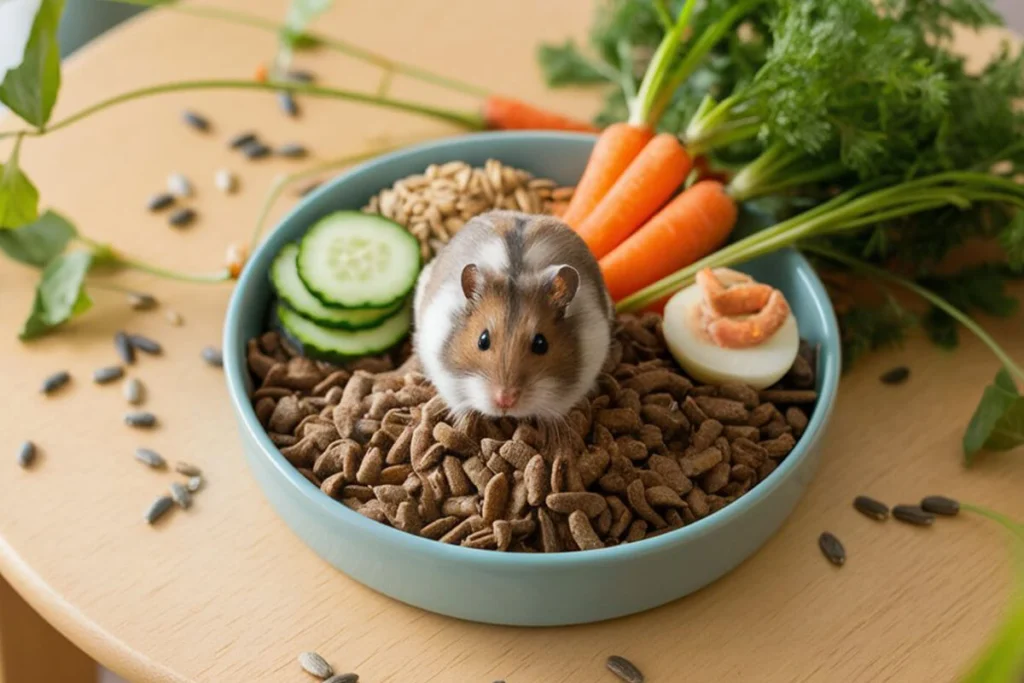
A proper diet should include high-quality commercial hamster food as the foundation. Choose a pellet-based hamster food or a high-quality seed mix formulated for dwarf hamsters. Since Chinese dwarf hamsters have a higher risk of diabetes, avoid food mixes that contain sugary ingredients like dried fruit or yogurt drops.
Fresh vegetables and occasional protein sources round out a healthy diet. Leafy greens like romaine lettuce, spinach, and kale provide essential vitamins, while vegetables like carrots, cucumbers, and bell peppers offer hydration and fiber. Protein-rich foods like boiled egg, mealworms, or plain cooked chicken help maintain muscle health and support overall growth.
Always provide fresh, clean water in a sipper bottle, and check it daily to ensure it’s working properly. A well-balanced diet prevents nutritional deficiencies and keeps your hamster happy and active.
Dwarf Hamster Food Recommendations
Not all hamster food is suitable for Chinese dwarf hamsters. Some commercial mixes contain too much sugar or unhealthy additives. Choose food that offers a balanced mix of protein, fiber, and healthy fats.
Recommended Commercial Foods:
- Oxbow Essentials Hamster & Gerbil Food – A pellet-based option that prevents selective eating.
- Higgins Sunburst Gourmet Blend – A seed mix with natural ingredients but should be given in moderation.
- Science Selective Dwarf Hamster Food – Formulated specifically for dwarf hamsters, with no added sugar.
Safe Fresh Foods:
- Vegetables: Broccoli, zucchini, kale, bell peppers, and carrots (in moderation).
- Fruits (Rare Treats): Small amounts of apple, pear, or blueberries (avoid sugary fruits like bananas and grapes).
- Protein: Boiled egg, plain chicken, or mealworms for an occasional boost.
Foods to Avoid:
- Citrus fruits (oranges, lemons) – Too acidic and can upset digestion.
- Onions, garlic, and leeks – Toxic to hamsters.
- Sugary or processed foods – Increase the risk of diabetes.
- Almonds, raw beans, and chocolate – Contain harmful toxins for hamsters.
Feeding the right food in proper portions keeps your hamster in top shape while preventing common health problems.
Diet for Chinese Dwarf Hamster
A proper feeding routine helps your Chinese dwarf hamster maintain a balanced diet and a healthy weight. Offer fresh food daily but avoid overfeeding, as dwarf hamsters tend to hoard excess food in their burrows.
Follow this daily feeding schedule:
- Morning: Refill the water bottle and offer a small portion of pellets or seed mix.
- Evening: Add a mix of fresh vegetables and an occasional protein source.
Use a small, shallow food dish to keep the cage clean and prevent food from scattering. Scatter-feeding (hiding food in different parts of the enclosure) encourages natural foraging behavior and provides mental stimulation.
Monitor your hamster’s weight and eating habits to detect any health issues early. If your hamster suddenly stops eating or gains excessive weight, consult a veterinarian. A well-planned diet supports long-term health and keeps your pet active and happy.
Keeping Your Hamster Active and Entertained
Hamster Wheel
A hamster wheel plays a crucial role in keeping your Chinese dwarf hamster active and preventing obesity. These small rodents have high energy levels and need an outlet to run, just as they would in the wild. Without proper exercise, they may develop stress-related behaviors like excessive chewing or cage climbing.
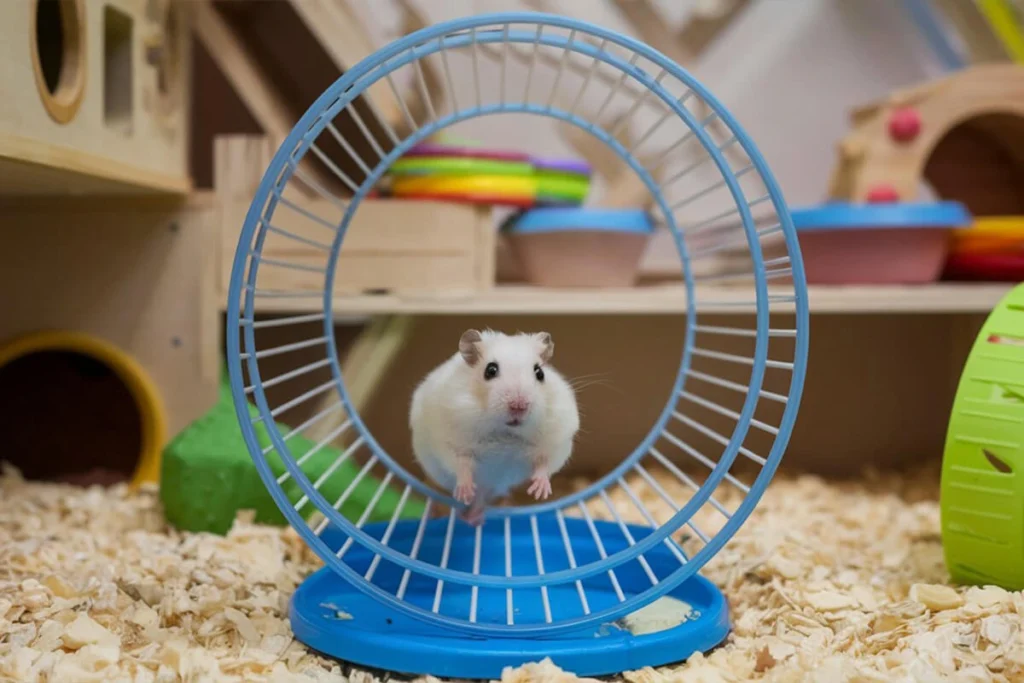
Choose a solid-surface wheel with a diameter of at least 6.5 to 8 inches to prevent back strain. A wheel that’s too small forces your hamster to arch its back unnaturally, which can cause long-term spinal issues. Opt for a silent wheel to avoid disturbing your sleep, especially if you keep your hamster’s cage in your bedroom.
Avoid wire or mesh wheels, as they can cause foot injuries or get your hamster’s tiny legs stuck. If your hamster doesn’t seem interested in the wheel at first, try placing some treats nearby to encourage exploration. A good-quality hamster wheel helps burn off excess energy and keeps your pet mentally engaged.
Exercise Toys
In addition to a hamster wheel, you need to provide a variety of exercise toys to keep your Chinese dwarf hamster stimulated. Hamsters love to explore, climb, and burrow, so offering different types of toys helps mimic their natural environment.
Best Exercise Toys for Chinese Dwarf Hamsters:
- Tunnels and Tubes – Plastic or cardboard tubes encourage burrowing and exploration.
- Climbing Platforms – Wooden ramps, ladders, and bridges provide an opportunity to climb and improve agility.
- Running Balls (Use with Caution) – A well-ventilated hamster ball allows your pet to roam outside the cage safely, but always supervise and limit use to 10–15 minutes.
- Sand Bath – A small dish filled with chinchilla sand helps remove excess oils from your hamster’s fur while providing entertainment.
Change your hamster’s toys often. This will keep your hamster happy and stop it from getting bored. Always check for sharp edges or small parts that could pose a choking hazard. Providing a variety of toys ensures that your hamster gets the exercise it needs while staying entertained.
Playtime and Bonding
Building trust with your Chinese dwarf hamster takes patience and consistency. These small rodents can be skittish at first, but regular playtime helps them feel comfortable around you.
Steps to Bond with Your Hamster:
- Start with Hand Feeding – Offer treats like sunflower seeds or mealworms from your palm to help your hamster associate your scent with positive experiences.
- Use a Calm Voice – Speak softly to reassure your hamster and avoid sudden movements that might startle it.
- Allow Free Roaming in a Playpen – Set up a safe, enclosed play area with tunnels, chew toys, and hideouts where your hamster can explore outside the cage.
- Practice Gentle Handling – Once your hamster trusts you, try scooping it up with both hands or letting it climb onto your palm voluntarily.
Never force your hamster to interact if it seems scared. Some hamsters take longer to warm up, so let them set the pace. The more time you spend interacting in a calm and patient manner, the stronger your bond will become.
By combining a hamster wheel, engaging toys, and regular playtime, you create a fun and stimulating environment that keeps your pet happy and active.
Maintaining Health and Hygiene
Chinese Dwarf Hamster Health and Wellness Tips
Keeping your Chinese dwarf hamster healthy requires regular observation and proactive care. These small rodents often hide signs of illness, so you need to look for subtle changes in behavior, appetite, and activity levels.
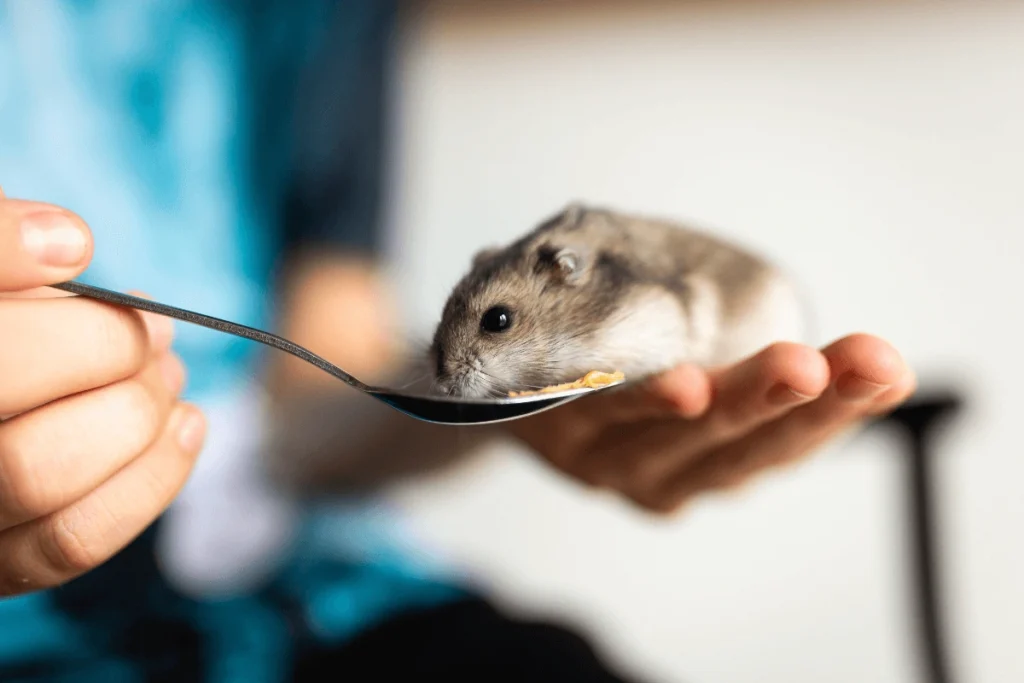
Common Health Issues in Chinese Dwarf Hamsters:
- Obesity – Feeding too many fatty seeds or treats can cause weight gain, leading to mobility issues and heart problems. Provide a balanced diet and encourage exercise with a hamster wheel and enrichment toys.
- Diabetes – Chinese dwarf hamsters have a higher risk of diabetes, so avoid sugary foods like fruits, honey sticks, and yogurt drops. Watch for symptoms like excessive drinking, frequent urination, or sudden weight loss.
- Wet Tail – This serious bacterial infection causes diarrhea, lethargy, and a hunched posture. If you see these signs, take your pet to the vet right away.
- Overgrown Teeth – Hamsters’ teeth grow continuously, so provide chew toys, wooden blocks, or untreated apple branches to prevent dental issues.
Check your hamster daily for signs of illness, such as dull fur, crusty eyes, labored breathing, or reduced appetite. If your hamster shows any of these symptoms, act quickly to prevent complications. A healthy hamster stays active, eats well, and maintains a clean, fluffy coat.
Veterinary Care For Chinese Dwarf Hamster
Even though Chinese dwarf hamsters are small, they still need proper medical care when health issues arise. Finding an exotic pet veterinarian experienced with small rodents ensures your hamster gets the best treatment.
When to Take Your Hamster to the Vet:
- If you notice sudden weight loss, lethargy, or breathing problems.
- If your hamster has overgrown teeth that make eating difficult.
- If your hamster develops a lump, wound, or skin infection.
- If you see persistent diarrhea, dehydration, or extreme thirst (signs of wet tail or diabetes).
Schedule annual health check-ups, even if your hamster seems fine. Routine visits help detect potential problems early and keep your pet in the best condition. Since hamsters have a short lifespan of 2–3 years, catching health issues early can make a significant difference in their quality of life.
Cage Cleaning Routine
Maintaining a clean cage prevents bacteria buildup, reduces odors, and keeps your Chinese dwarf hamster comfortable. Follow a regular cleaning schedule to ensure a healthy and hygienic environment.
Daily Cleaning Tasks:
- Remove uneaten fresh food to prevent mold and bacteria.
- Spot-clean soiled bedding and wet spots (especially near the water bottle).
- Wipe down the food dish and water bottle.
Weekly Cleaning Tasks:
- Replace 30–50% of the bedding to maintain a familiar scent while keeping the cage fresh.
- Clean the hamster’s hideout and toys using warm water and a pet-safe disinfectant.
- Wipe down cage surfaces to remove dust, debris, and urine stains.
Deep Cleaning (Every 3–4 Weeks):
- Remove all bedding and thoroughly wash the cage with mild soap and warm water.
- Rinse and dry completely before adding fresh bedding.
- Rotate and sanitize toys to prevent bacteria buildup.
Avoid using strong-smelling cleaners like bleach since hamsters have sensitive respiratory systems. Always let the cage dry completely before putting your hamster back inside. A consistent cleaning routine ensures your pet stays healthy while keeping odors under control.
By following proper health and hygiene practices, providing timely veterinary care, and maintaining a clean environment, you can keep your Chinese dwarf hamster happy, comfortable, and free from health issues.
Taming and Socializing Your Hamster
How to Tame a Chinese Dwarf Hamster
Taming a Chinese dwarf hamster takes patience and consistency, but once you gain its trust, your hamster will feel comfortable interacting with you. Since these small rodents tend to be shy and quick-moving, you need to approach taming carefully to avoid overwhelming them.
Steps to Tame Your Chinese Dwarf Hamster:
- Let Your Hamster Adjust – Give your hamster a few days to settle into its new environment before attempting interaction. Avoid sudden movements or loud noises that could startle it.
- Use Your Voice – Speak softly near the cage to get your hamster familiar with your voice. A calm, gentle tone reassures your pet that you are not a threat.
- Offer Treats from Your Hand – Place a small treat (like a sunflower seed or mealworm) on your palm and let your hamster approach voluntarily. Do this daily to build positive associations.
- Let Your Hamster Climb Onto Your Hand – Once your hamster confidently takes treats from your palm, place your hand flat inside the cage and allow it to sniff and climb onto your fingers at its own pace.
- Practice Gentle Handling – Slowly scoop up your hamster using both hands, allowing it to rest in your cupped palms. Keep movements slow and steady to avoid startling it.
- Limit Handling Time at First – Start with short, positive handling sessions (a few minutes at a time) and gradually increase the duration as your hamster becomes more comfortable.
Never force your hamster to interact if it seems stressed or nervous. If your hamster runs away or hides, give it more time to adjust. Taming requires patience and consistency, but once your hamster trusts you, handling becomes much easier.
Handling and Bonding
Building a strong bond with your Chinese dwarf hamster goes beyond just taming—it requires regular, positive interactions that make your pet feel safe and secure.
Best Ways to Strengthen Your Bond:
- Use Treats as Rewards – Hand-feeding helps reinforce trust and makes handling a rewarding experience.
- Create a Safe Play Area – Set up a secure playpen outside the cage with tunnels, chew toys, and hiding spots. Let your hamster explore while you interact at its level.
- Avoid Grabbing from Above – Since predators in the wild attack from above, your hamster might feel scared if you reach down suddenly. Instead, approach from the side and let your hamster come to you.
- Be Patient and Consistent – Spend a few minutes every day interacting with your hamster so it gets used to your presence.
If your hamster bites or shows signs of fear, avoid reacting with sudden movements. Instead, gently place it back in the cage and try again later. The more positive experiences your hamster has with you, the stronger your bond will become.
Chinese Dwarf Hamster Socialization with Other Pets
Chinese dwarf hamsters prefer solitude and do not usually get along with other hamsters. Unlike Syrian hamsters, which are strictly solitary, some dwarf hamster species can tolerate cagemates, but Chinese dwarf hamsters tend to be territorial and may fight if housed together.
Should You Keep Multiple Hamsters Together?
- Most Chinese dwarf hamsters do best when housed alone. Keeping two together often leads to aggression, stress, and injuries.
- If you want to attempt pairing, introduce them at a young age and monitor them closely. If they show signs of fighting (such as chasing, biting, or loud squeaking), separate them immediately.
- Always provide multiple hideouts, food dishes, and wheels to minimize competition if housing two hamsters together.
Introducing Your Hamster to Other Pets
- Keep Other Pets Away from the Cage – Cats and dogs might see your hamster as prey, which can cause unnecessary stress.
- Supervise Any Interactions – If you allow your hamster to explore outside the cage, ensure other pets are securely separated to prevent accidental harm.
- Avoid Letting Hamsters and Other Small Rodents Interact – Even if you own other small pets like gerbils or guinea pigs, avoid introducing them. Different rodent species do not understand each other’s behaviors and may react aggressively.
Providing a stress-free, solitary environment helps your Chinese dwarf hamster feel safe and secure. Focus on bonding with your hamster directly rather than trying to introduce it to other animals.
By following proper taming techniques, handling carefully, and respecting your hamster’s need for personal space, you will create a strong, trusting relationship with your pet.
Conclusion
Caring for a Chinese dwarf hamster requires patience, attention to detail, and a commitment to providing a safe, enriching environment. By following essential care tips, you can ensure your pet stays happy and healthy while building a strong bond.
Start by creating a comfortable habitat with a spacious cage, soft bedding, and essential accessories like a hamster wheel and hideouts. A well-designed enclosure offers security and mental stimulation.
A balanced diet plays a key role in your hamster’s health. High-quality pellets, fresh vegetables, and occasional protein sources help prevent obesity and diabetes, two common health concerns for Chinese dwarf hamsters.
Exercise and playtime keep your hamster active and engaged. Providing tunnels, chew toys, and climbing structures adds variety to its routine, while supervised bonding sessions strengthen trust.
Regular health monitoring and cage cleaning are equally important. A consistent cleaning schedule keeps the habitat fresh and reduces illness risks. Observing your hamster’s behavior helps detect early health issues, allowing for timely veterinary care.
Patience and consistency are key to taming and bonding with your pet. These small rodents take time to trust, but with gentle handling and daily interactions, they become friendly and comfortable companions.
By following these Chinese dwarf hamster care tips, you can create a nurturing environment that supports your pet’s well-being. Whether you’re a first-time owner or an experienced hamster enthusiast, prioritizing your pet’s needs will lead to a fulfilling and joyful experience for both of you.
Find Out More about Other Pets and breeds From HERE!
Discover the Best stuff for your Pet On Pet MD Official
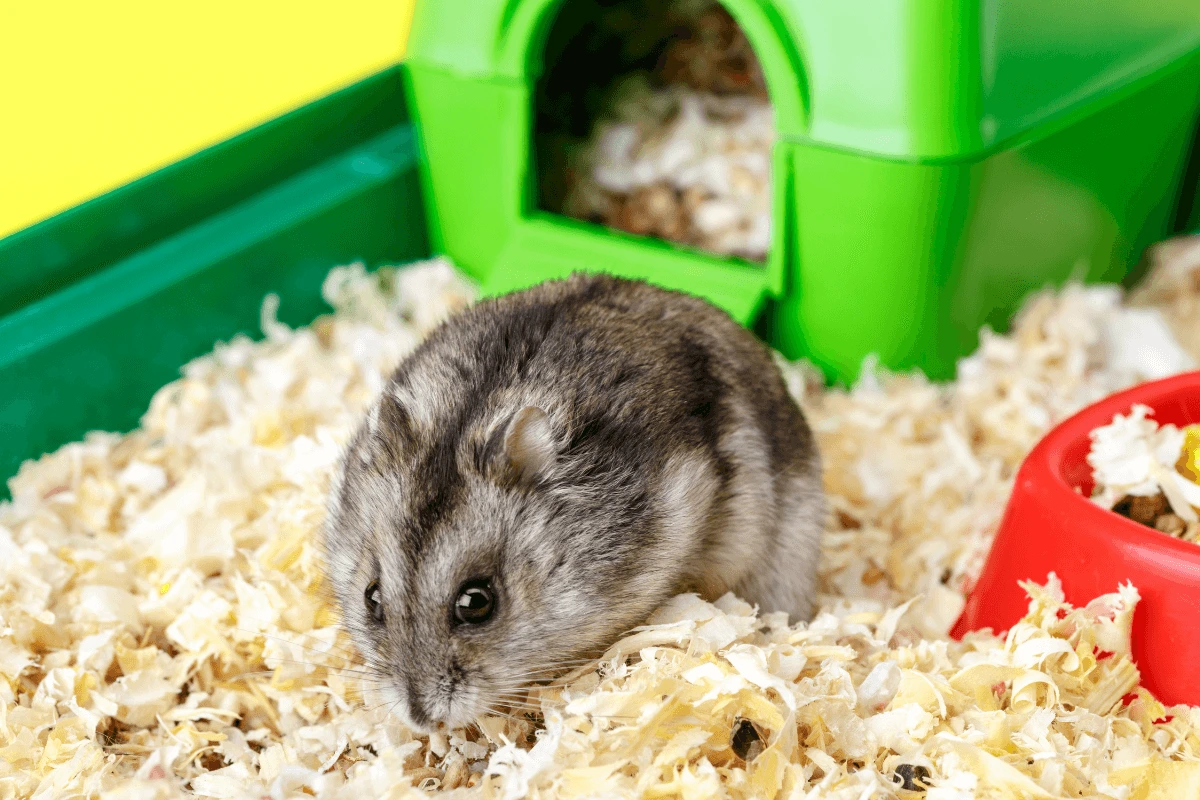
3 thoughts on “Top 10 Chinese Dwarf Hamster Care Tips for a Happy, Healthy Pet”
Comments are closed.